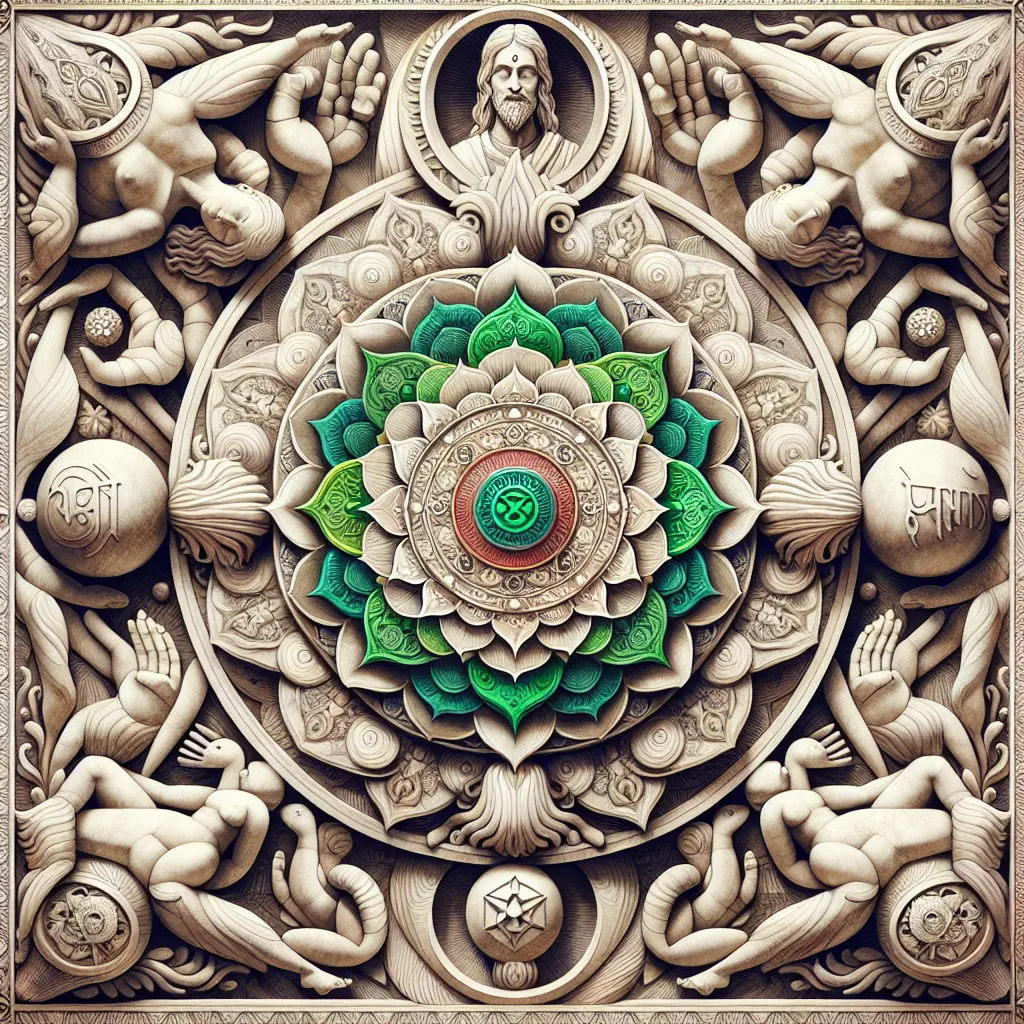
- Published on
- Authors

- Name
- You
The Heart Chakra (Anahata): Love and Compassion
Introduction
The Heart Chakra, or Anahata in Sanskrit, is the fourth primary chakra, located at the center of the chest. Anahata translates to "unstruck" or "unhurt," signifying its inherent purity and untarnished state. This chakra is pivotal in balancing love, compassion, and emotional well-being. When aligned, the Heart Chakra enables us to connect deeply with others and ourselves, fostering a sense of unity and empathy.
The Science of the Heart Chakra
Anatomy and Physiology
The Heart Chakra corresponds to the cardiac plexus in modern physiology, entailing a network of nerves that regulate the heart and its associate functions. Here's an anatomical correlation:
| Aspect | Physiological Component |
|---|---|
| Location | Center of the chest |
| Endocrine Gland | Thymus gland |
| Associated Organ | Heart, Lungs |
| Nerve Plexus | Cardiac Plexus |
The Electromagnetic Heart
Scientific research has demonstrated that the heart generates the most potent electromagnetic field in the body. Heart Rate Variability (HRV) and cardiomagnetic fields are directly impacted by emotional states. Positive emotions such as love and compassion enhance coherence in these fields, grounding the mystical assertion that the heart is central to emotional energy.
Mystical Wisdom of Anahata
Symbolism and Elements
- Color: Green, symbolizing growth and harmony.
- Element: Air, representing freedom and expansiveness.
- Symbol: A lotus with twelve petals, encapsulating pivotal qualities such as joy, peace, and love.
Energetic Properties
The Heart Chakra harmonizes the lower, material chakras with the higher, spiritual chakras. It serves as a bridge, allowing for the transcendence of the ego and the establishment of a more profound, unconditional love.
Practices for Opening the Heart Chakra
Meditation Techniques
Visualization:
- Sit comfortably and envisage a green light emanating from your heart.
- Breathe deeply, expanding the green light with each inhale.
Affirmations:
- "I am open to love and kindness."
- "I forgive myself and others."
Physical Practices
Yoga Poses:
- Camel Pose (Ustrasana): Opens the chest and heart area.
- Bridge Pose (Setu Bandhasana): Encourages heart expansion.
Breathwork:
- Pranayama:
- Anulom Vilom: Balances energy flow.
- Deep Diaphragmatic Breathing: Activates the cardiac plexus, enhancing heart function.
- Pranayama:
Emotional and Social Practices
Cultivating Compassion:
- Engage in acts of kindness and service.
- Practice empathy by attentive listening and acknowledging others' feelings.
Healing Techniques:
- Reiki: Channel energy to balance the Heart Chakra.
- Crystal Healing: Use stones like Rose Quartz and Green Aventurine.
Contemporary Integration: Blending Science and Spirituality
Advancements in HeartMath and neurocardiology corroborate ancient mystical insights regarding the heart's profound role in emotional regulation and holistic health. Research into the heart-brain connection reveals that cultivating positive emotional states results in systemic health benefits, echoing the practices advocated by mystics for centuries.
Conclusion
The Heart Chakra, Anahata, embodies the fusion of love and compassion, vital for emotional equilibrium. By understanding its dual physiological and mystical dimensions, we can cultivate practices to open this energy center, fostering deeper self-awareness and interconnectedness with others. Embrace the wisdom of the heart, where science and spirituality converge, to lead a more balanced and harmonious life.
